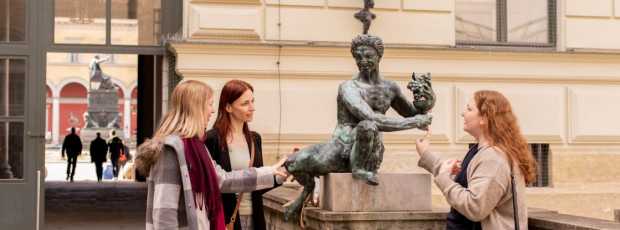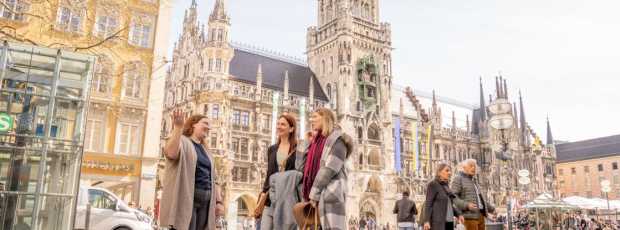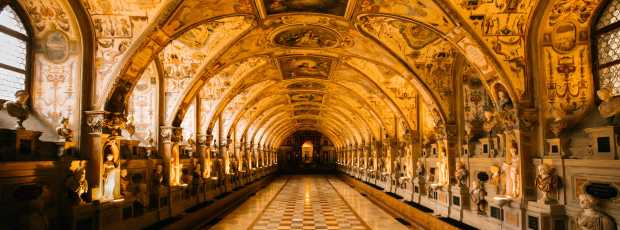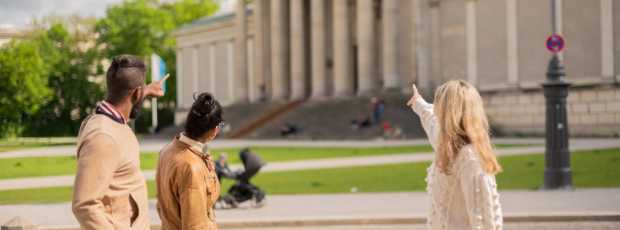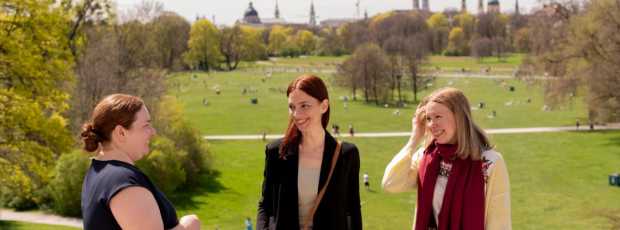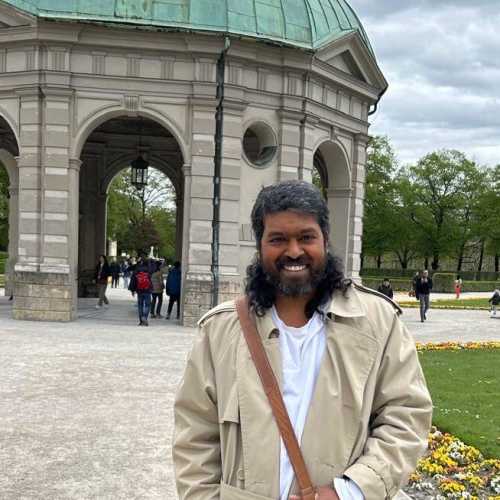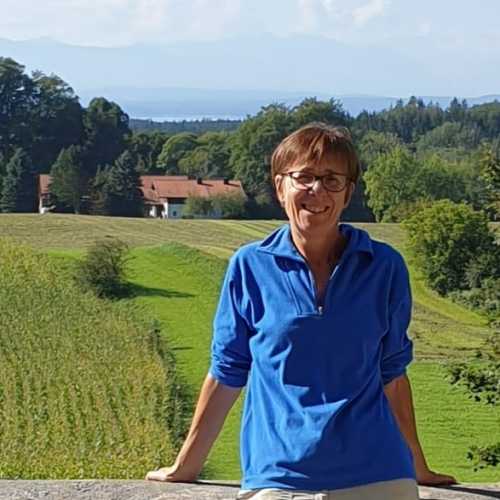Table Of Contents
- Why Munich Is Perfect for Train-Based Exploring
- How to Use the Bayern Ticket (And Why You Should)
- Munich Day Trips via Train: Planning Your Adventures
- Best Day Trips from Munich: The Essential List
- Dachau Concentration Camp Memorial: Confronting History
- Regensburg: Medieval Stone Bridges and UNESCO Streets
- Nuremberg: Castles, Courts, and Cobblestone Streets
- Neuschwanstein Castle: Fairytales via Train and Bus
- Garmisch-Partenkirchen: Cable Cars and Alpine Air
- Salzburg, Austria: A Cross-Border Day Worth the Ride
- Eagle's Nest and Berchtesgaden: History in the Mountains
- Lindau on Lake Constance: Germany's Riviera
- Half Timbered Houses and Bamberg's Little Venice
- Ulm: Where Einstein Meets Gothic Grandeur
- Rothenburg ob der Tauber: Walking the Romantic Road
- Augsburg: Free Imperial City With Roman Roots
- Day Trip Planning: Quick Picks Near Munich
- Final Tips: Train Tickets, Timetables, and Local Buses
- How to Choose Your Perfect Day Trip from Munich
- Making the Most of Your Munich Day Trip Adventures
The city's train connections reach medieval towns, Alpine peaks, and concentration camp memorials with German punctuality.
Why Munich Is Perfect for Train-Based Exploring
I've lived here long enough to know that the best Munich day trips by train start with understanding Deutsche Bahn's network.
Every day trip from Munich becomes so effortless when you grasp the system. The trains run frequently, the stations are well-marked, and the Bayern Ticket makes everything affordable.
![ Inside Munich Central Station during morning rush.]()
Munich Central Station handles over 450,000 passengers daily. That's more people than live in most Bavarian towns.
The main hall buzzes with travelers heading to day trip destinations across southern Germany and Austria.
Every day trip from Munich begins here.
![Bayern ticket validation at platform. ]()
Regional trains connect Munich to destinations that would take hours to reach by car. The S-Bahn system extends into the countryside, while regional express trains reach major cities within two hours.
Deutsche Bahn's infrastructure in Bavaria is extensive. Most day trip destinations are accessible by direct train or simple connections.
The network connects historic towns, natural landmarks, and memorial sites with reliable service.
How to Use the Bayern Ticket (And Why You Should)
The Bayern Ticket is Bavaria's gift to budget travelers. This single ticket grants unlimited travel on regional trains throughout the state for one day.
The cost starts around €25 for individuals, with additional travelers adding modest fees.
![Traveler holding Bayern ticket on train.]()
I buy my Bayern Ticket online the night before early morning trips. The DB Navigator app makes purchasing simple for any day trip from Munich.
You can also buy tickets at station machines or ticket counters, though lines can be long during peak hours.
The ticket is valid from 9 AM on weekdays and midnight on weekends. It covers S-Bahn, regional trains, and many local buses.
High-speed ICE trains are not included, but you won't need them for day trips.
![Ticket machine interface at Munich station.]()
Validation is crucial for any day trip from Munich. You must validate paper tickets before boarding. The small yellow machines are located near platform entrances. Electronic tickets on your phone don't require validation.
The Bayern Ticket's coverage extends beyond Bavaria's borders. You can reach Salzburg in Austria and several towns in neighboring German states.
This makes cross-border day trips surprisingly affordable. Planning a day trip from Munich to Austria costs the same as domestic travel.
Group travel is surprisingly economical with the Bayern Ticket. Up to five people can travel together at significant savings.
Split among friends, group travel costs much less per person for unlimited regional travel.
![Person holding a Bayern Ticket.]()
Looking for a private city experience in Munich?
Explore the city with a local who plans a private day just for you; no groups, no scripts.
Munich Day Trips via Train: Planning Your Adventures
Planning a day trip from Munich requires considering travel time, opening hours, and return schedules.
Most destinations are reachable within 1-3 hours by train. This gives you 6-8 hours to explore before heading back. You'll find that every day trip from Munich follows this timing pattern, or something close to it.
Morning departures work best for distant destinations. Early trains to Berchtesgaden allow full days at the Eagle's Nest with comfortable evening returns to Munich. This schedule maximizes every day trip from Munich.
Some destinations require connections. Neuschwanstein Castle involves a train to Füssen, then a bus to the castle area.
The journey takes 2.5 hours but rewards you with Germany's most famous fairy-tale castle. Multi-leg day trips require extra planning.
![Neuschwanstein Castle in the distance.]()
Weather affects mountain destinations more than city trips during your day trip from Munich. The Zugspitze cable car closes during storms, while Regensburg's covered streets provide shelter on rainy days. Check forecasts before departing on any day trip from Munich.
Ticket reservations aren't required for regional trains, but seats fill up on weekends and holidays. Consider traveling on weekdays when trains are less crowded and destinations more peaceful. Weekday day trips offer better experiences overall.
Best Day Trips from Munich: The Essential List
The best day trips from Munich balance travel time with experience quality. A two-hour journey should lead to something genuinely special. Bavaria delivers on this promise repeatedly. Every day trip from Munich offers unique rewards.
Regensburg offers the perfect introduction to Bavarian day trips. This UNESCO World Heritage site is 90 minutes away by train. Its medieval streets and stone bridge provide hours of exploration without feeling rushed. This day trip from Munich suits first-time visitors perfectly.
![Regensburg.]()
Dachau requires different preparation for your day trip from Munich. The concentration camp memorial is just 25 minutes from Munich, but the emotional weight demands a full morning or afternoon. This isn't a quick tourist stop but essential education.
Neuschwanstein Castle attracts millions of visitors annually. The fairy-tale setting justifies the crowds and longer journey time. King Ludwig II's vision remains Bavaria's most photographed landmark.
This challenging day trip from Munich rewards patient travelers.
![Neuschwanstein Castle in setting sun.]()
Nuremberg combines medieval charm with modern history.
The imperial castle overlooks streets where Nazi rallies once took place. This contrast makes it one of Germany's most complex cities. Every day trip from Munich to Nuremberg teaches important lessons.
Dachau Concentration Camp Memorial: Confronting History
The train to Dachau leaves from Munich Central Station frequently throughout the day. The S-Bahn reaches Dachau station quickly.
From there, connecting buses serve the memorial site regularly. This day trip from Munich requires minimal travel time.
![Entrance gate of Dachau Memorial.]()
The Dachau Concentration Camp Memorial sits where the first concentration camp operated during the Third Reich.
Hundreds of thousands of prisoners were held here. Tens of thousands died within its walls. This memorial site preserves their memory.
The memorial opens daily with limited closure days. Entry is typically free, though audio guides are available for a small fee.
The exhibition halls document the camp's history through photographs, documents, and survivor testimonies. This memorial site educates visitors about the Holocaust and its dark history.
![Educational exhibit at memorial site.]()
Walking through the reconstructed barracks feels sobering. The memorial site preserves the camp's layout while adding educational elements.
Visitors learn about prisoner daily life, resistance efforts, and liberation.
The concentration camp's proximity to Munich made it a training center for SS guards. Many guards later worked at other camps throughout Nazi-occupied Europe.
This connection links Dachau to the broader Holocaust. The memorial site explains these connections clearly.
![The Dachau Concentration Camp Memorial from a distance.]()
Plan several hours minimum for the memorial site. The exhibition is comprehensive but emotionally heavy.
Many visitors need breaks between sections. The memorial site includes visitor facilities. A friendly heads-up: this day trip from Munich demands emotional preparation.
Return trains to Munich run regularly throughout the day. The journey back provides time to process what you've seen. This isn't entertainment but essential historical education.
What if your day in Munich was planned by someone who knows it — and you?
City Unscripted matches you with a local host who creates a private experience based on your interests, not a set route.
Regensburg: Medieval Stone Bridges and UNESCO Streets
![Aerial of Regensburg's historic old town. ]()
The train to Regensburg takes about an hour and a half from Munich Central Station. Regional trains run regularly throughout the day.
The city's main station sits just outside the historic old town, within easy walking distance of the city center. This day trip from Munich offers medieval immersion.
Regensburg's UNESCO World Heritage site status protects over a thousand historic buildings.
The medieval city escaped World War II bombing, preserving its medieval character. Half timbered houses line narrow cobblestone streets. This UNESCO World Heritage site maintains its original layout.
The Old Stone Bridge crosses the Danube River after centuries of service.
This engineering marvel predates many famous European cathedrals. The bridge's multiple arches supported medieval trade routes between Northern and Southern Europe.
![Sunset on Stone Bridge.]()
Regensburg Cathedral's Gothic spires dominate the skyline. Construction began in medieval times and continued for centuries.
The cathedral houses the famous Regensburg Domspatzen boys' choir, one of the world's oldest. Cathedral visits anchor most day trips here.
![Regensburg Cathedral.]()
The historic old town contains Germany's largest collection of medieval buildings. Each street offers new exploration opportunities: hidden courtyards, ancient towers, and merchant houses.
The city wall remnants mark the medieval boundaries. Walking tours enhance any day trip experience.
Regensburg's position on the Danube made it a major trading center. Roman legions founded the settlement in ancient times.
The name Regensburg derives from this Roman heritage.
The compact city center allows easy walking between major sights. Plan half a day in Regensburg for your day trip from Munich. If you can't, just know that anything less than two hours will not be enough.
Nuremberg: Castles, Courts, and Cobblestone Streets
![View from Nuremberg Castle. ]()
Nuremberg sits approximately one hour from Munich by high-speed train or longer by regional train. The Bayern Ticket covers regional services but not high-speed trains.
The main station connects directly to the old town via underground walkways.
Nuremberg Castle towers over the city from its rocky perch. Holy Roman Empire emperors resided here for centuries.
The castle complex includes the Imperial Palace, Deep Well, and Round Tower. City views stretch across red-tiled rooftops to distant hills.
The city's medieval walls remain largely intact. Walking the ramparts provides perspective on Nuremberg's strategic importance. The walls protected one of the Holy Roman Empire's most significant cities.
![Nuremberg Old Town alley.]()
Nuremberg's old town combines medieval architecture with darker 20th-century history.
The Nazi Party held massive rallies here in the 1930s. The Palace of Justice later hosted the Nuremberg Trials, where war criminals faced justice.
The Hauptkirche (Main Church) houses the mechanical clock that performs daily shows. Carved figures circle the Holy Roman Emperor in a medieval spectacle.
This clock has marked time for centuries.
Cobblestone streets connect market squares, Gothic churches, and half timbered houses. The Christmas Market, Germany's most famous, completely transforms these streets each December.
Summer, in turn, brings outdoor cafes and street musicians.
Albrecht Dürer's house preserves the Renaissance master's workshop. The artist lived here during the early 16th century until his death. His prints and paintings influenced European art for centuries.
![Albrecht Dürer's house.]()
Neuschwanstein Castle: Fairytales via Train and Bus
The journey to Neuschwanstein Castle begins with a train ride of about two hours to Füssen.
Regional trains depart Munich regularly, crossing the Bavarian countryside to reach the Alpine foothills. Füssen station connects to castle shuttle buses.
![Tourists on a Neuschwanstein day trip.]()
King Ludwig II commissioned Neuschwanstein Castle as his personal retreat in the mid-19th century.
The Bavarian king wanted to recreate medieval romance in 19th-century splendor. Construction continued until his mysterious death in the 1880s.
The castle clings to a rocky outcrop above the village of Hohenschwangau. Its white limestone walls and blue-roofed towers inspired Disney's Sleeping Beauty Castle. Walt Disney visited personally in the mid-20th century.
![Neuschwanstein from Marienbrücke.]()
The Marienbrücke (Mary's Bridge) provides the classic Neuschwanstein view. The bridge spans a dramatic gorge high above the Pöllat Falls. Photography enthusiasts gather here throughout the day.
Hohenschwangau Castle sits across the valley from Neuschwanstein. King Ludwig II grew up here, dreaming of the grander castle he would build.
Both castles offer guided tours, though advance booking is essential.
Bus shuttles run regularly between Füssen station and the castle area. The journey takes about 10-15 minutes through Alpine meadows and forests. Walking is possible but requires significant uphill effort.
![Hohenschwangau Castle in autumn.]()
I recommend that you reserve castle tours well in advance before traveling. Tickets sell out weeks ahead during peak season.
Tip
We match you with the right host, not just any guide.Want to experience the real Munich with someone who lives there?
A fully private experience, planned and led by a local host who tailors the day to you
Garmisch-Partenkirchen: Cable Cars and Alpine Air
The train to Garmisch-Partenkirchen takes approximately 90 minutes from Munich Central Station. Regional trains run regularly to this Alpine resort town.
The journey passes through rolling countryside before entering the Bavarian Alps.
![Cable car ascending Zugspitze.]()
Garmisch-Partenkirchen hosted the Winter Olympics in the 1930s and remains Germany's premier Alpine destination. The town combines traditional Bavarian architecture with modern resort amenities. Painted house facades tell folk stories in vibrant colors.
The Zugspitze, Germany's highest peak, looms over the town. Cable cars and a cogwheel railway reach the summit year-round. The journey offers panoramic views across multiple countries.
![Garmisch alpine meadow hike.]()
Hiking trails radiate from the town center into Alpine meadows and forest paths. The Partnach Gorge walk follows rushing water through limestone cliffs. This moderate hike includes waterfall viewpoints.
The Bavarian Alps surrounding Garmisch offer activities for all fitness levels.
Easy walks lead to beer gardens with mountain views. Challenging routes climb to mountain huts serving traditional Alpine cuisine. The Bavarian Alps provide endless exploration opportunities.
![The Bavarian Alps.]()
Winter changes Garmisch into a skiing destination. The town's four ski areas provide slopes for beginners and experts. Cross-country skiing trails wind through snow-covered valleys.
Winter day trips offer completely different experiences.
Summer brings hiking, mountain biking, and paragliding opportunities. The surrounding peaks offer everything from gentle walks to technical climbing routes.
Alpine lakes provide swimming and boating activities.
Salzburg, Austria: A Cross-Border Day Worth the Ride
The train to Salzburg takes about two hours from Munich's Central Train Station. This cross-border journey requires no passport checks thanks to European Union agreements. Austrian trains are included in the Bayern Ticket's coverage.
![Salzburg skyline with fortress.]()
Salzburg's baroque architecture earned UNESCO World Heritage status in the 1990s.
The city center preserves its historical character through strict preservation laws. Church spires and palace domes create a distinctive skyline.
Mozart's birthplace on Getreidegasse attracts music lovers from around the world. The narrow medieval street houses shops, cafes, and the composer's childhood home. Yellow building facades create a cheerful atmosphere.
![Lovely street cafe scene.]()
Hohensalzburg Fortress overlooks the city from its hilltop position. This medieval castle is one of Europe's largest fortress complexes. The funicular railway climbs the hillside efficiently.
The city center spans both sides of the Salzach River. Baroque churches, elegant squares, and historic residences fill the old town.
The new town contains the Mirabell Palace and its famous gardens.
Salzburg's position near the German border made it a major trade center. Salt mining in the surrounding mountains created the city's wealth.
![Mirabell Palace.]()
The name Salzburg literally means "salt castle."
The Sound of Music filming locations attract visitors seeking movie connections. While locals roll their eyes at the tourist focus, the film's settings are genuinely beautiful parts of the city.
Eagle's Nest and Berchtesgaden: History in the Mountains
The journey to Berchtesgaden requires a longer train ride from Munich. Regional trains cross the Alpine foothills to reach this border town. The route passes through increasingly dramatic mountain scenery.
![View from Eagle's Nest terrace.]()
The Eagle's Nest perches high above sea level on the Kehlstein mountain.
Nazi leaders built this retreat for Adolf Hitler's birthday in the late 1930s. The building now serves as a restaurant and historical site.
Access to the Eagle's Nest requires a special bus from Berchtesgaden. The route climbs through multiple tunnels blasted through solid rock. The final elevator shaft rises through the mountain's interior.
![Tunnel entrance to Eagle's Nest. ]()
The Eagle's Nest operates seasonally from May to October. Weather conditions can close the mountain road without warning. Clear days offer views across the Austrian Alps to distant peaks.
Berchtesgaden town center provides less controversial attractions. The royal palace houses a museum documenting Bavarian history. Salt mine tours explore underground chambers carved over centuries.
Königssee lake sits in a glacial valley near Berchtesgaden. Electric boats cross the pristine waters to reach the pilgrimage church of St. Bartholomä. The lake's clarity reflects surrounding mountain peaks.
Ready to plan your perfect day in Munich?
Start your experienceLindau on Lake Constance: Germany's Riviera
The train journey to Lindau takes several hours from Munich, crossing the Bavarian countryside to reach Lake Constance.
This massive lake borders Germany, Austria, and Switzerland. Lindau occupies an island connected to the mainland by bridge.
![Lindau lighthouse and harbor. ]()
Lindau's harbor features a lighthouse and Bavaria's only lion statue guarding the entrance. The medieval town center occupies the island's compact area. Half timbered houses and narrow streets create intimate walking routes.
Lake Constance stretches many kilometers from east to west. The lake's size creates its own weather patterns and supports year-round ferry services.
Swimming is popular during summer months when water temperatures are comfortable.
![Tourists on a Lake Constance ferry ride.]()
Ferry connections link Lindau to Swiss and Austrian towns around the lake. Day trips can include visits to multiple countries using integrated transport tickets.
The international atmosphere feels more like the Mediterranean than Bavaria.
The old town hall's painted façade depicts historical scenes in vivid colors. Renaissance frescoes cover the building's exterior walls. The nearby market square hosts weekly farmers' markets selling local produce.
Lindau's position made it a major trading center during medieval times. Merchants crossed the lake carrying goods between Northern and Southern Europe. The town's wealth supported elaborate church and civic buildings.
Half Timbered Houses and Bamberg's Little Venice
![Bamberg's river town hall. ]()
The train to Bamberg takes about two hours from Munich Central Station. This UNESCO World Heritage city managed to escape World War II bombing, preserving its medieval character. The train arrives at Bamberg's modern station, within walking distance of the historic center.
Bamberg's old town hall sits on an artificial island in the Regnitz River. Local legend claims the bishop refused to grant land for a town hall, so citizens built it in the river.
The building's baroque façade features intricate frescoes.
Half timbered houses line the river banks in the area called "Little Venice." Medieval fishermen's cottages create one of Germany's most photographed streetscapes. Small gardens extend to the water's edge.
![Bamberg beer cellar exterior.]()
Bamberg produces its own unique smoked and famous beer called Rauchbier. The malty flavor comes from malts dried over beechwood fires. Local breweries have maintained this tradition for centuries.
The cathedral houses the tomb of Pope Clement II, the only papal grave in Germany.
Four towers mark this Romanesque building's distinctive silhouette.
![The tomb of Pope Clement II]()
The adjacent New Residence features baroque state rooms.
Bamberg's multiple hills each topped with church spires earned it the nickname "Franconian Rome." The city served as a major ecclesiastical center during the Holy Roman Empire.
Bishops ruled here for many centuries.
The memorial site at former concentration camps reminds visitors of Bavaria's darker history. Bamberg's preserved medieval streets provide a stark contrast to 20th-century horrors documented elsewhere.
Ulm: Where Einstein Meets Gothic Grandeur
The train to Ulm takes approximately an hour and 30 minutes from Munich Central Station. Direct regional trains run regularly to this city on the Danube River. Ulm sits at the border between Bavaria and Baden-Württemberg.
![Ulm Minster tower.]()
Ulm Minster boasts the world's tallest church spire. The Gothic cathedral took centuries to complete, finishing in the late 19th century.
Climbing the many steps to the top platform gives you panoramic views across the Danube valley.
Albert Einstein was born in Ulm in the late 19th century, though his family moved to Munich when he was very young. A memorial fountain in the city center honors the Nobel Prize winner's connection to the city.
![Danube riverbank in Ulm.]()
The Danube River begins its long journey to the Black Sea near Ulm. The city's position at this major European river crossing made it a significant trading center. Medieval walls and towers still mark the old town boundaries.
Ulm's old town combines Gothic churches with Renaissance merchant houses. The fish market quarter preserves narrow streets and traditional half timbered houses.
Modern sculptures complement historical architecture throughout the city center.
Ulm's peaceful streets and Gothic grandeur offer a different perspective on the nation's cultural heritage.
Ulm's compact size allows exploration in half a day. The main sights cluster around the cathedral and market square.
Riverside walks along the Danube provide scenic routes between historical sites.
Rothenburg ob der Tauber: Walking the Romantic Road
The train journey to Rothenburg ob der Tauber requires a connection, taking several hours total from Munich. This medieval town sits on the Romantic Road tourist route.
The effort required to reach it keeps crowds manageable compared to more accessible destinations.
![Rothenburg skyline at golden hour. ]()
Rothenburg's city wall remains completely intact, allowing visitors to walk the entire perimeter. The covered walkway provides views over red-tiled rooftops and surrounding countryside. Medieval towers mark defensive positions along the wall.
The market square features the town hall's Renaissance façade and the baroque clock that performs hourly shows.
![Night Watchman's route. ]()
The Night Watchman's tour takes place each evening. This costumed guide leads visitors through dark streets while sharing stories of medieval life.
Rothenburg's preservation as a museum city began in the 19th century. The Romantic Road marketing campaign made it famous among international tourists.
This attention brings crowds but also funds continuing preservation efforts.
![The Medieval Museum.]()
The Medieval Museum houses artifacts from the city's past, including historical instruments and craftsmen's tools. The building itself dates to medieval times and was once a monastery.
Cobblestone streets lead to hidden courtyards and ancient churches.
The city's compact size makes walking easy, though the medieval layout can be confusing. Most visitors stick to the main routes connecting major sights.
Augsburg: Free Imperial City With Roman Roots
The train to Augsburg takes under an hour from Munich Central Station. Direct regional trains run frequently throughout the day. This makes Augsburg one of the most easily accessible day trip destinations from Munich.
![Augsburg Fuggerei courtyard.]()
The Fuggerei is the world's oldest social housing complex, founded in the early 16th century by merchant Jakob Fugger. The historic houses still provide accommodation for needy Catholic residents at symbolic rent plus daily prayers.
Augsburg's history stretches back to Roman times when it was called Augusta Vindelicorum. The city became a major trading center during the Holy Roman Empire.
The Fugger banking family rivaled the Medici in wealth and influence.
![The Fuggerei.]()
The Renaissance city hall displays the wealth of 16th-century merchants. The Golden Hall features elaborate ceiling frescoes and carved decorations.
This secular building rivaled church architecture in its grandeur.
Augsburg's textile industry made it one of Europe's richest cities during the Renaissance. The Fugger family's banking operations extended across Europe, financing emperors and kings.
![The Renaissance city hall.]()
Day Trip Planning: Quick Picks Near Munich
Several destinations near Munich offer satisfying day trips with minimal travel time.
These locations work well when you want cultural experiences without long train journeys.
Freising sits just 30 minutes from Munich by S-Bahn. The cathedral dominates this episcopal city that predates Munich. The old town features baroque architecture and traditional beer gardens.
![Freising's town center. ]()
Rosenheim takes under an hour to reach by regional train. This market town preserves its traditional Bavarian character while serving as a modern economic center.
The surrounding countryside offers easy hiking opportunities.
Ammersee lake sits about 45 minutes from Munich by S-Bahn, and I think it's one of our most beautiful lakes in its plainness.
This natural lake provides swimming, sailing, and lakeside walking opportunities. Several towns around the lake offer restaurants and beer gardens.
![Ammersee lake view. ]()
These shorter day trips work well for afternoon excursions or when weather limits mountain destinations.
Local bus connections extend options from main train stations to smaller villages and natural areas.
Half-day trips allow combination with other activities. Morning visits to nearby towns can be followed by afternoon exploration of Munich's museums or parks.
Final Tips: Train Tickets, Timetables, and Local Buses
The DB Navigator app provides real-time schedule information and mobile ticketing. Download it before traveling to avoid language barriers at ticket machines.
The app works offline once schedules are downloaded.
![DB Navigator app open on phone.]()
Platform changes occur frequently, especially at major stations. Check departure boards before boarding trains. German stations announce changes in German first, then English.
Local bus connections extend train network reach to destinations like Neuschwanstein Castle and the Eagle's Nest.
Bus schedules coordinate with train arrivals. Purchase bus tickets from drivers or automated machines at larger stations.
![Local bus in alpine village. ]()
Train tickets purchased online cost the same as station purchases. Mobile tickets eliminate paper handling and validation requirements. Keep your phone charged and screenshots of important tickets.
I should warn that weekend travel requires earlier planning. Popular destinations fill up quickly on Saturdays and Sundays.
Consider traveling on weekdays when possible for smaller crowds and better train availability.
Some destinations work better by car than train.
![Tourists driving around, passing lovely gardens and views.]()
Consider multiple stops along the Romantic Road or accessing remote hiking trails favor automobile travel. Rental cars from Munich provide flexibility for such itineraries.
Weather impacts mountain destinations more than city trips. Cable cars and mountain buses suspend service during storms. Have backup indoor destinations ready for bad weather days.
Reserve accommodation in advance for overnight trips. Day trips from Munich provide sufficient time for most destinations, but some warrant longer stays. Book early during festival seasons and summer months.
How to Choose Your Perfect Day Trip from Munich
Consider your interests when selecting destinations for your day trip from Munich. History enthusiasts gravitate toward Nuremberg, Dachau, and Regensburg.
Architecture lovers prefer Bamberg, Rothenburg, and Augsburg for their day trip from Munich.
Nature seekers choose mountain destinations like Garmisch-Partenkirchen and Berchtesgaden.
Lake lovers head to Lindau on Lake Constance or smaller lakes like Ammersee. Every day trip from Munich caters to different interests.
![Tourists walking past peaceful scene.]()
Travel time affects destination choice for any day trip from Munich. Nearby cities like Augsburg and Freising suit shorter available periods. Distant locations like Lindau and Berchtesgaden require full-day commitments.
Plan your day trip from Munich based on available time.
Weather influences mountain and lake destinations more than cities during your day trip from Munich. Summer brings perfect conditions for Alpine adventures.
Winter changes these areas into snow-covered wonderlands with different activity options. Weather planning improves every day trip from Munich.
![Munich in winter.]()
Making the Most of Your Munich Day Trip Adventures
Start early to maximize destination time during your day trip from Munich. The first trains leave Munich early morning for most destinations.
Early arrivals beat crowds and provide better photography lighting. Morning departures optimize every day trip from Munich.
Pack light for day trips from Munich. Comfortable walking shoes, weather-appropriate clothing, and a small backpack suffice for most adventures.
Leave room for souvenirs and local purchases. Smart packing enhances any day trip Munich experience.
![Tourists leisurely walking past building with baroque style atchitecture.]()
Learn basic German phrases for train travel on your day trip from Munich. "Entschuldigung" (excuse me), "Danke" (thank you), and "Sprechen Sie Englisch?" (do you speak English?) help with communication. Language basics improve day trip interactions.
Bring cash for small purchases during your day trip from Munich. While cards work at major locations, smaller establishments and local buses often require cash payments.
ATMs are available at most train stations. Cash preparation prevents day trip complications.
Download offline maps to your phone before any day trip from Munich.
![Tourists looking at map on phone.]()
Data coverage can be spotty in mountain areas. Having backup navigation prevents getting lost in unfamiliar destinations. Digital preparation supports successful day trips.
Research opening hours before traveling on your day trip from Munich. Museums and attractions have varying schedules, especially on Mondays. Nothing disappoints like arriving at closed destinations after long train journeys. Planning prevents day trip disappointments.
Exciting Day Trips Are Waiting For You
There are many beautiful cities just waiting for you to see them.
Not all of them have a fairytale castle, extensive gardens or medieval architecture, but they all have unique charms. I recommend visiting as many of them as you can.
Bavaria's compact size and excellent rail connections make multiple day trips feasible during longer stays.
Every expedition from Munich adds layers to your understanding of this beautiful region where history, culture, and nature intersect.
The tracks lead everywhere worth going. Your perfect day trip from Bavarian capital awaits, so check out the best Munich guides as soon as you can!
![Small city that looks like it's still in the middle ages.]()
What if your day in Munich was planned by someone who knows it — and you?
City Unscripted matches you with a local host who creates a private experience based on your interests, not a set route.
Want to experience the real Munich with someone who lives there?
A fully private experience, planned and led by a local host who tailors the day to you


